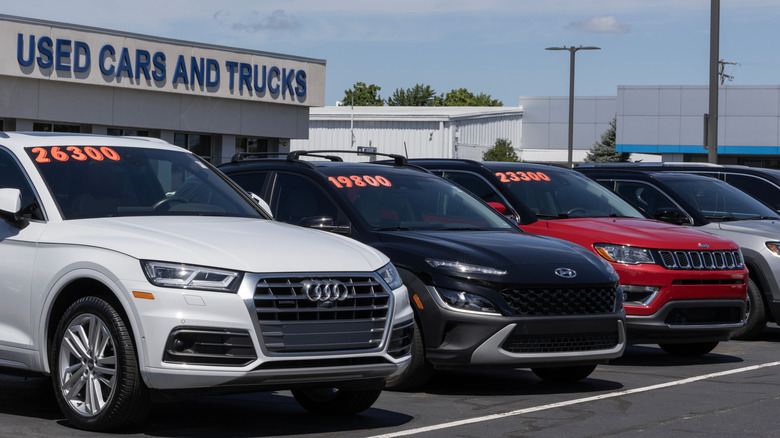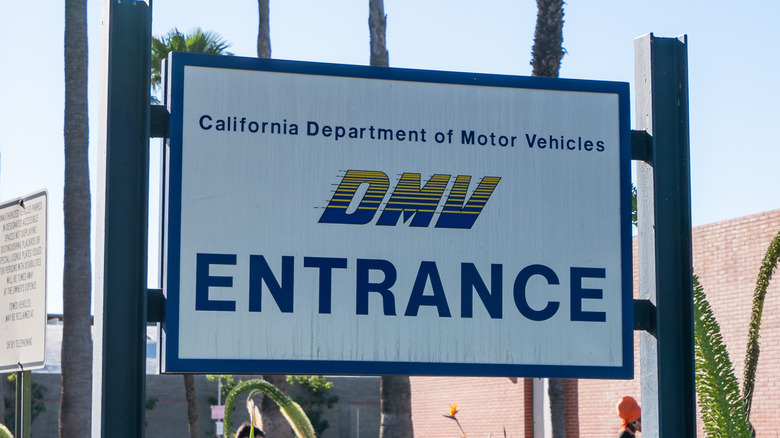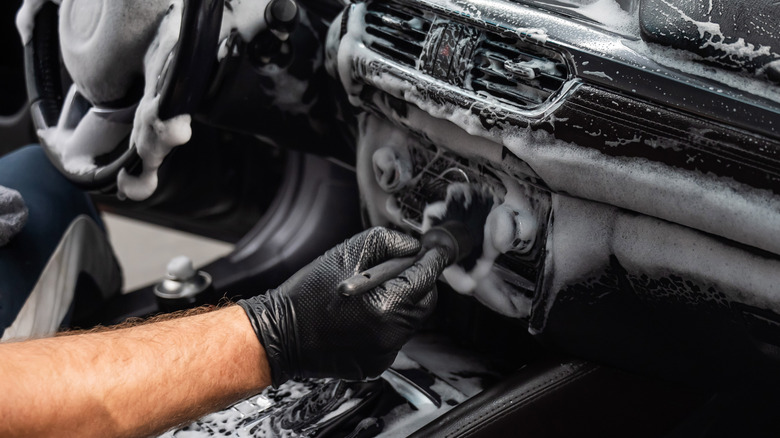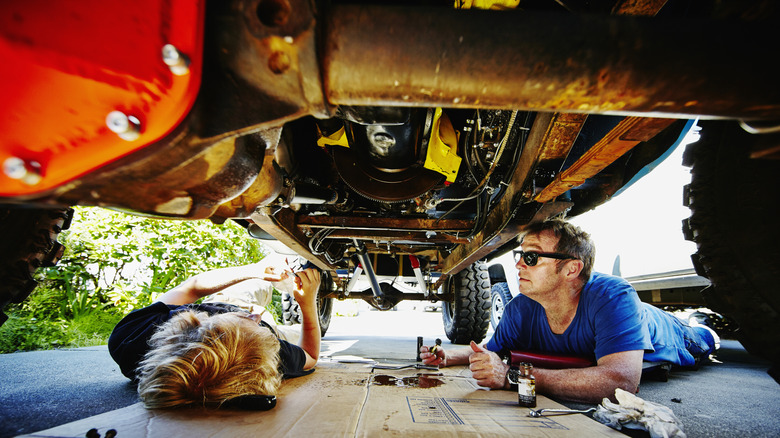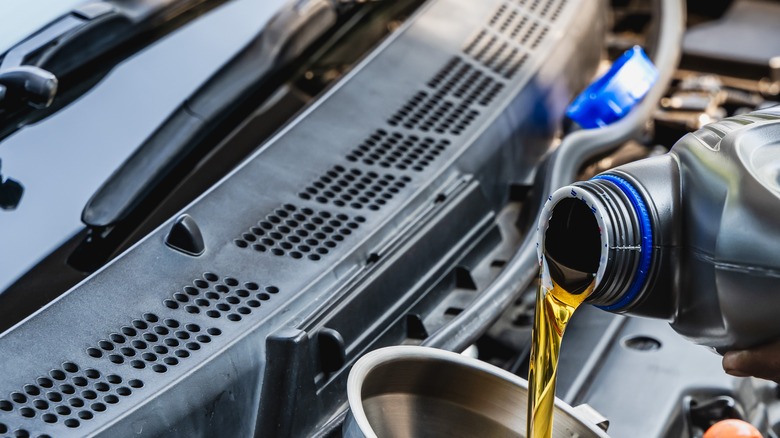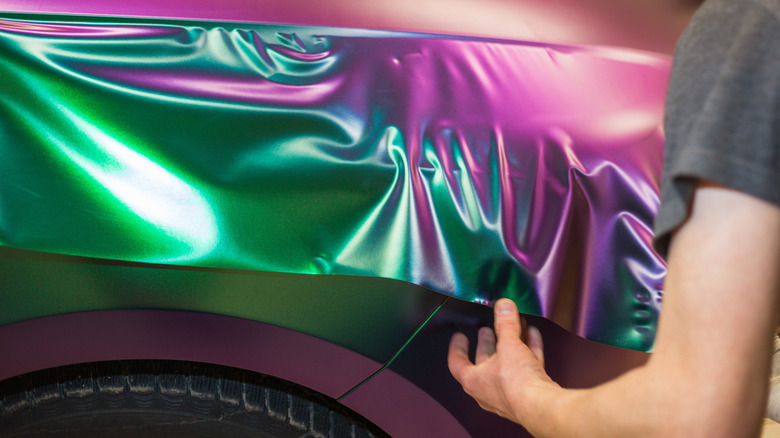6 Things You Should Do After Buying A Used Car
For many people, getting a car can be a life-changing experience. While it's no longer perceived as the same rite of passage as it used to be, it's still a skill that many people find valuable, especially if you live in an area wherein there are limited public transportation options. However, new cars aren't as cheap as they used to be, with reports sharing that they've been steadily rising in the past few years.
Thankfully, there are tons of used vehicles in great condition that have passed through the hands of loving owners that are generally more affordable. Plus, there are plenty of reasons why we still opt for second hand cars. Apart from less depreciation, there are other advantages, like generally lower insurance rates. Not to mention, it's also a great way to finally own the classic car of your childhood dreams that stopped production a long time ago.
Similar to buying a car at a dealership, there's still a whole checklist of things you can do after buying a used vehicle. Here are some things you should definitely not miss after leaving with your new (used) car.
Invest in car insurance
Whether it's liability or full coverage, car insurance is a prerequisite to being able to drive in the United States. Depending on your state, the exact insurance requirements will vary, so you'll want to confirm any details before making your choice. Similar to new cars, you'll have your pick between different insurance coverages that meet the minimum requirements. While the rules can be straightforward for new cars straight out of the dealership, it's not exactly true for used cars.
After all, there are a lot more things to consider, especially with how they're valued. In reality, there are so many types of used cars out there. Apart from the standard secondhand vehicle from owners in the middle of a lifestyle upgrade, there are also used cars that have more history, so their market value isn't necessarily pegged precisely to how many years since their release.
For example, cars with salvaged titles, a history of being rebuilt, and classic cars will be treated a little differently than standard vehicles. In some cases, they may also require additional processes before a policy is granted. To manage expectations, this could mean you will either need special policy, settle for not being fully covered, or may need to undergo an official inspection. In the past, we've also discussed how some classic car insurance policies also factor in the cost of the upgrades and restoration that you've invested into making the vehicle go against the grain of time.
Register with the DMV
The rules for DMV registration will be slightly different depending on whether you buy from a dealer versus on Facebook Marketplace. Typically, the dealership will do the leg work for you on this and even provide temporary tags, which you can use until your vehicle is fully registered with your local DMV. However, there are some exceptions, such as where you made the purchase. For example, the Washington State Department of Licensing shares that you may still need to process the title transfer yourself even if you buy from a dealer, if they are not based in the same state. On the other hand, if you buy your car from a private person, this responsibility usually falls on both of you.
In California, the DMV mentions that sellers need to report the sale within five days, while as a buyer, you have up to 10 days to transfer ownership from the seller. To do this, you'll need to provide the signed title, smog certification, and for cars less than a decade old, the odometer mileage information. While you have the option to mail your form, you can also submit your documents in their office directly if you need help clarifying things like the right registration fees. On the other hand, the rules are a little different in Washington, DC, wherein you have up to 15 days to process the ownership transfer or risk paying penalties that can go up to $125.
Get your car cleaned up
Depending on the condition of the car you've purchased, it may also entail additional clean up to be usable or comfortable to ride in. If you don't have a budget to hire a professional cleaner, we have a ton of tips for how to get your car's interior sparkling. This includes using handheld steamers, toothbrushes for tight corners, and those quirky little slimes to get into the hard-to-reach air conditioner vents. If you don't need to replace the one that came with your secondhand car, you can also check out our deep cleaning guide for tires.
Apart from the usual surface level cleaning, such as the vehicle interiors and exteriors, you'll also need to consider doing a proper deep clean of the undercarriage and engine bay. But before you get started, you need to make sure that you have a scrub brush, high pressure water source, degreaser, and car shampoo.
While it is possible to use a regular garden hose with a pressurized nozzle for this, there are products like the Ridge Washer Pressure Washer designed specifically for the undercarriage. So far, over a thousand people think it's worth it and gave it an average of 4.5 stars. Alternatively, if you want something a little more flexible in terms of other used, you can also consider getting Ryobi's Water Broom.
Make necessary repairs
Unlike buying cars fresh from the dealership, the chances that you may need to fix a thing or two goes up if you get a secondhand car, especially if you scored it at bargain prices. Although some sellers may disclose any existing issues with the car, they're not required by law if its specific model was part of a manufacturer recall. For reference, some car brands that have the most recalled vehicles include Ford, General Motors, and Chrysler.
If you were not able to ask recall information beforehand, you can check out the National Highway Traffic Safety Administration (NHTSA) for more information. To do this, you'll need to find your car's VIN number and bash it against the database. In some cases, this might help you get a better insight on the possible issues your car might have, or even save your life.
Depending on the extent of the existing damage, you can opt to get repairs done professionally or at home. If you're lucky, your car may be a model that's cheap to repair, like the Honda Accord, Honda Civic, or Mazda3. Regardless, learning how to do basic repairs like fixing a flat tire can save your life in an emergency, and there are plenty of free videos online on YouTube that you can use as a reference. In addition, we also have a ton of how-to's on almost every kind of car repair here on SlashGear that you can browse too.
Schedule maintenance
Once you've done the repair work necessary to get your car in working order, the next step is to make sure that it stays that way. To do this, you'll want to make sure that you don't miss out on your maintenance and try to automate reminders for it as much as possible. These days, there are tons of ways to track your maintenance schedule, like using Excel sheets, project management tools, or dedicated apps, so you can experiment with what you prefer.
Depending on how comfortable you are with your skills, you can opt to do some minor maintenance things at home. For example, some engine maintenance tasks like changing the oil, air filter, spark plugs, or battery can be pretty straightforward to do yourself. If you don't know where to start, we've rounded up some pretty useful maintenance tips and tricks that can keep your car out of the shop for longer. But take note, there might be a ton of upfront cost on new parts if you want to get into more difficult tasks.
Although, these will likely offset the cost of getting professional help with time. While you're at it, it's also a good idea to learn some useful skills like removing rust, which can quickly degrade the appearance of your car in the future. Although aesthetics aren't everything, these can affect the value of your car if you decide to resell it in the future.
Make it your own
After making sure your car is properly registered, running, and sparkling from the inside out, you can slowly get into making your used car feel more like you. While some cars are easier to mod than others, like the Ford Focus, Jeep Wrangler, and Ford F-150, there are endless ways to make your car feel like your home on the road. To do this, you can explore everything from changing what it looks like outside, as well as inside.
Apart from color changing technology popping up on cars, there are even new car colors gracing the streets every day. But if you live in a low-key sketchy area, just make sure that you avoid the colors that make them more likely to be stolen, like gold. If you really want to set it apart from the crowd, you can even vinyl wrap your car, which can be extremely customizable.
Although, this can look pretty messy if you don't know what you're doing, and you're probably better off getting professionals to do it. On the other hand, if it's not within your budget to make massive changes right away, you can start by adding small things to your car, like humidifiers, car mats, or steering wheel covers. And of course, you can't miss out on things like phone holders, dash cameras, and other things meant to both enhance your driving experience and stay safe on the road.
